As the colder months approach, many gardeners might think it’s the end of the growing season. However, with the right knowledge and preparation, it’s possible to continue harvesting fresh produce throughout the winter. Root vegetables are particularly well-suited for this purpose due to their ability to withstand cold temperatures and be stored for extended periods.
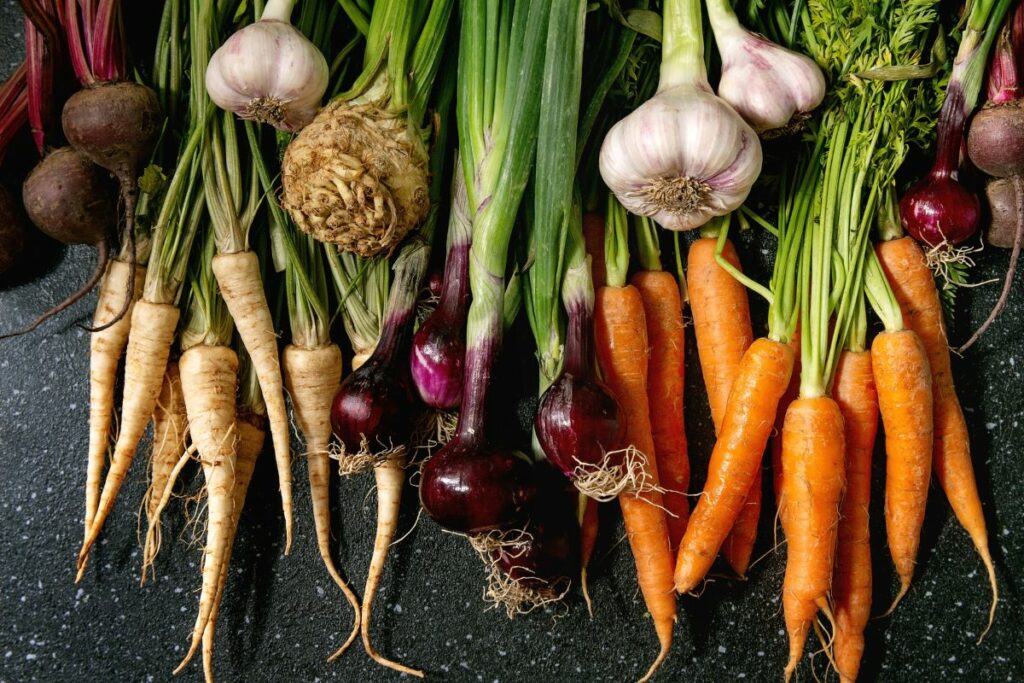
Table of Contents
Why Grow Root Vegetables?
Root vegetables are a popular choice for winter gardens for several reasons. They are hardy and can withstand frost, making them ideal for the colder months. Additionally, they are versatile in the kitchen, being used in everything from hearty stews to fresh salads. Their long storage life means that you can enjoy your homegrown produce well into the winter months.
Root vegetables also offer a variety of health benefits. They are high in fiber, which is important for digestion and overall gut health. They are also packed with vitamins and minerals, such as vitamin A, vitamin C, potassium, and magnesium. Plus, they are low in calories and high in antioxidants, making them a nutritious addition to any diet.
Growing root vegetables at home also allows you to have control over the quality of the produce. You can ensure that no harmful chemicals or pesticides are used in their growth, leading to healthier and safer vegetables for you and your family.
Plus, there’s nothing quite like the satisfaction of harvesting your own fresh produce right from your own backyard!
Related: 26 Winter Vegetables To Grow in Your Garden
Best Root Vegetables To Grow For Winter
Now that we know why you should grow root vegetables for winter, you might be wondering which ones to grow. Here I’ve compiled a list of 14 root vegetables you can grow in your garden for a winter harvest. Let’s find out more details about each one.
1. Beets
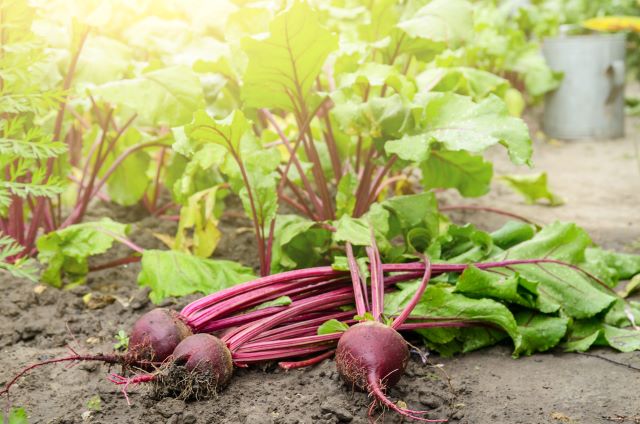
Beets are a fantastic winter vegetable option. Beets are easy to grow and can be stored for a long time.
To start planting beets for a winter harvest, begin sowing the seeds in late summer or early fall. This timing allows the beets to establish themselves before winter sets in. Select a well-draining and fertile soil for planting, and sow the seeds at a depth of about 1/2 inch to 1 inch.
During the winter months, it’s important to protect the beets from harsh weather conditions. Use mulch and row covers to protect them from the cold.
Harvesting beets is done when they reach a desirable size, usually around 1 to 3 inches in diameter. In colder regions, the outer leaves of the beet plant may die back, but the roots remain viable beneath the soil.
Their earthy flavor is perfect for soups and salads, making them a versatile addition to the winter menu. Beets can be roasted, steamed, pickled, or eaten raw, and beet greens can also be cooked and enjoyed as a nutritious side dish.
2. Carrots
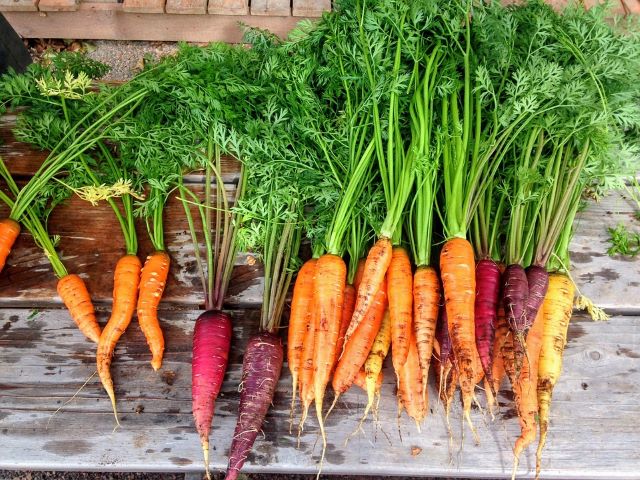
Carrots are a classic choice for winter harvest. With proper mulching, they can be left in the ground and harvested as needed throughout the winter. Their sweet flavor and crisp texture make them a favorite for both fresh eating and cooking.
Carrots prefer cooler temperatures for germination, so the fall season provides an ideal time for their initial growth. Choose a well-drained soil with good fertility, and sow the seeds about half an inch deep.
Applying mulch around the carrot bed helps regulate soil temperature, prevents freezing, and provides insulation.
The cold temperatures of winter contribute to the sweetness of carrots, making them a flavorful addition to winter meals. To harvest them, gently loosen the soil around the carrots, and carefully lift them from the ground.
One of the best parts of growing your own carrots is you can also eat the leafy carrot tops!
3. Celery Root

Celery root, also known as celeriac, is a flavorful option for winter gardening.
Celery root is relatively cold-tolerant, but you should use mulch and row covers to help protect them from the cold to ensure a healthy crop during the winter.
Harvesting celery root when the bulbs have reached a good size, around 3-4 inches in diameter. The good news is that the flavor and texture of celery root improve after exposure to cooler temperatures. Gently dig around the base of the plant, being careful not to damage the roots, and lift the celery root from the soil.
This knobby root vegetable is a great addition to soups and stews and can be stored for an extended period, providing a source of fresh produce during the colder months.
4. Garlic
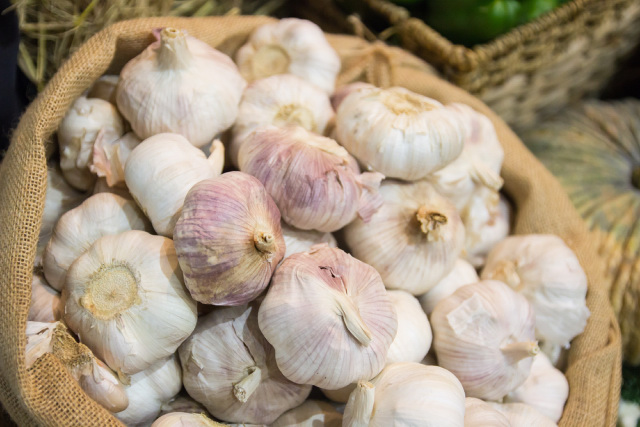
Growing garlic in the fall for a winter harvest is a common practice among gardeners. It can be left in the ground over winter and harvested in the spring when the weather improves. In the meantime, the garlic cloves will continue to develop, providing a bountiful harvest in the next growing season.
Plant the individual cloves about 2 inches deep and 6-8 inches apart in rows. Mulch the garlic bed with a layer of straw or leaves to protect the cloves from temperature fluctuations and suppress weed growth.
Harvesting garlic usually takes place in late spring or early summer, depending on the variety. When the leaves start to yellow and die back, it’s a sign that the bulbs are ready. Dig up the bulbs gently, and allow them to cure in a dry, well-ventilated area for around 3 weeks.
5. Ginger
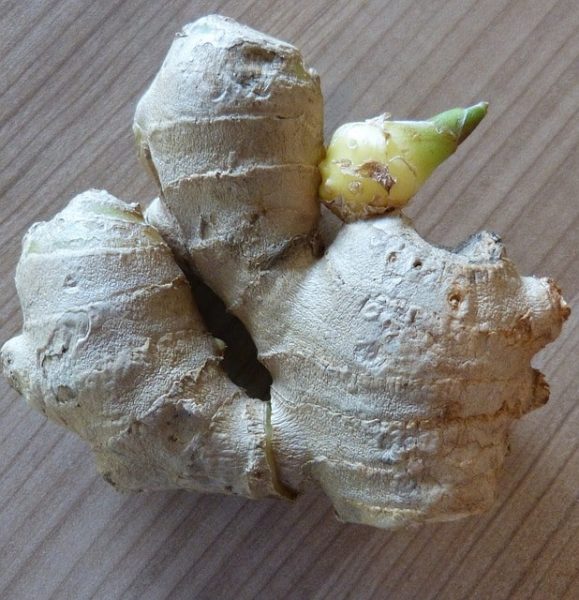
While not a typical root vegetable, ginger can be grown in a pot or containers indoors during the winter months. With proper care, you can enjoy the experience of harvesting your own fresh ginger for culinary use.
Start by obtaining ginger rhizomes, which are available at garden centers or can be sourced from a mature ginger plant. Plant the rhizomes in a container so you can move it indoors during winter. Ensure the planting depth is shallow, with the buds facing upward, and cover with a light layer of soil.
Keep the plant in a warm and partially shaded location, as direct sunlight can be too harsh. Water the ginger sparingly during its dormancy period, but ensure the soil remains consistently moist.
Harvesting ginger typically occurs 8-10 months after planting when the leaves turn yellow and begin to die back. Gently dig up the rhizomes, being careful not to damage them. Allow the harvested ginger to air-dry for a few days before storing or using it.
6. Jerusalem Artichoke
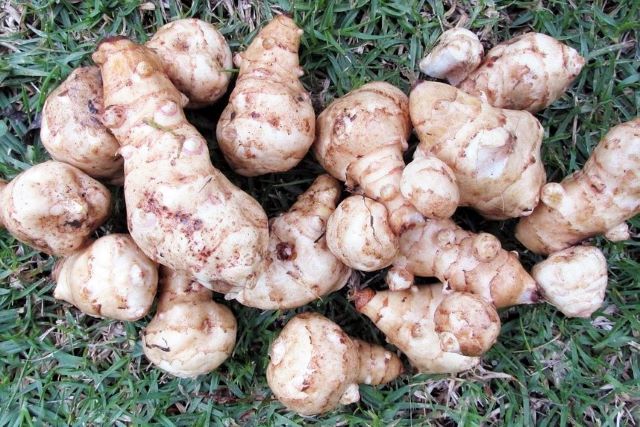
Jerusalem artichokes, also known as sunchokes, are a hardy and low-maintenance root crop that can be left in the ground and harvested as needed throughout the winter months. Their nutty flavor and crunchy texture make them a delightful addition to winter meals.
To start, plant Jerusalem artichoke tubers in late fall or early winter, allowing them to establish before the ground freezes. Choose a well-drained garden location with full sun for optimal growth. Plant the tubers about 3-5 inches deep and 12-24 inches apart in rows. These plants are known for their rapid growth, so provide them with sufficient space.
During the winter, Jerusalem artichokes require minimal care. Their tall stems may die back with the onset of cold weather, but the tubers will remain underground, ready for harvest when needed. The plants are frost-resistant and can withstand winter temperatures.
Harvest Jerusalem artichokes when they are dormant, typically in late fall or early winter after the first frost. Dig them up carefully, and store them in a cool, dark place until ready for use.
7. Leeks
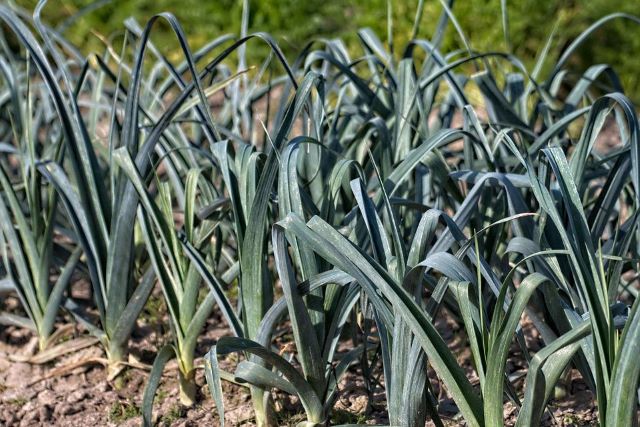
Leeks are a cold-hardy allium that can be harvested throughout the winter. Their mild onion-like flavor makes them a versatile ingredient in many dishes, from soups to savory pies.
Leeks thrive in cooler temperatures and can withstand frost, making them well-suited for winter cultivation.
During the winter months, leeks require some protection in the form of mulch and row covers to ensure a successful harvest.
Harvest leeks when they have reached the desired size, usually starting in late fall and continuing through winter. The flavor of leeks tends to improve after exposure to cooler temperatures.
8. Onions
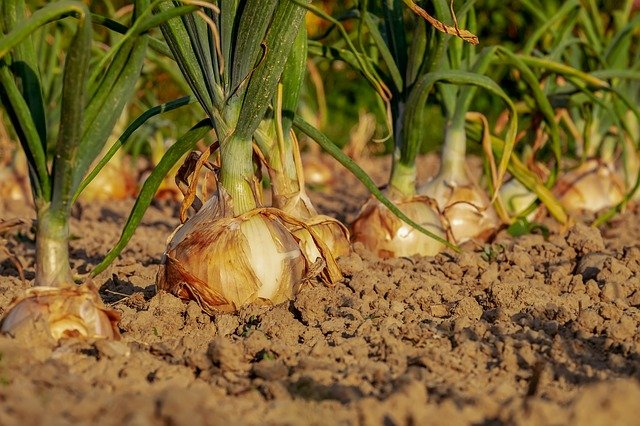
Onions are a staple in many cuisines and can be stored for long periods in a dry and cool environment. They are relatively easy to grow and are well-suited for overwintering, providing a fresh supply of these aromatic bulbs throughout the winter.
Some onion varieties are more suitable for winter planting than others. Ideally, onion sets or seedlings should be planted in late fall, approximately 4-6 weeks before the first expected hard frost. Choose a well-drained and fertile soil for planting. Onions thrive in full sun, so select a location that receives plenty of sunlight. Plant the sets or seedlings at the recommended spacing and depth, usually around 1 inch deep.
Harvesting onions typically takes place in late spring or early summer, depending on the variety. When the tops start to yellow and fall over, it’s an indication that the onions are ready for harvest. Carefully lift the onions from the ground, allow them to cure in a dry, well-ventilated area for a few weeks, and then store them in a cool, dry place.
9. Parsnips
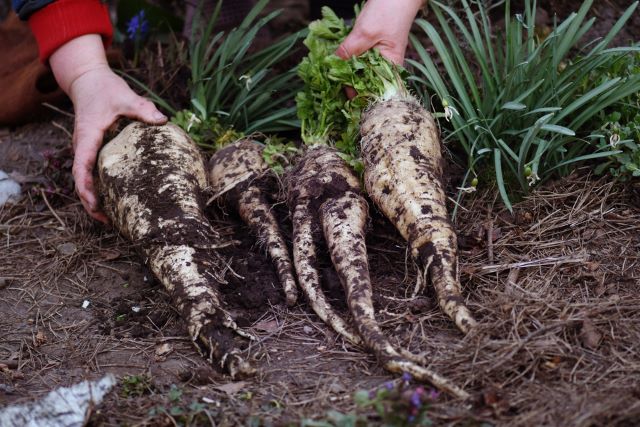
Parsnips are a delicious and sweet root vegetable that becomes even tastier after exposure to frost. They can be left in the ground and harvested as needed, providing a fresh supply of this winter treat.
Start by sowing parsnip seeds directly in the garden in late fall, approximately 2-4 weeks before the first expected hard frost. Select a sunny location with well-drained, loose soil for optimal growth. Plant the seeds about half an inch deep and thin the seedlings as they grow to ensure proper spacing.
During the winter months, parsnips benefit from a layer of mulch to protect them from temperature fluctuations and freezing and thawing cycles. The mulch also helps in retaining moisture in the soil. Regular watering ensures proper root development.
Harvest parsnips when they have reached maturity, usually after exposure to winter cold. The cold temperatures contribute to the conversion of starches into sugars, enhancing their sweetness. Usually, parsnips are ready for harvest in late winter or early spring.
10. Potatoes
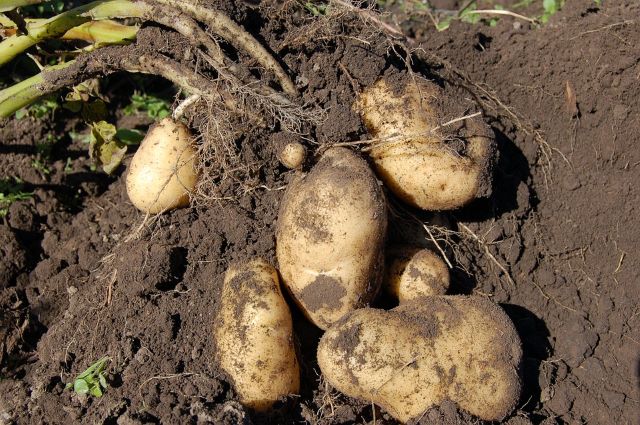
Potatoes can be grown in the fall and harvested throughout the winter months. With proper storage conditions, they can last for several months, allowing for a continuous supply of this versatile tuber.
Start by planting early-season potato varieties in late fall, several weeks before the first expected frost. The potatoes will develop roots before the ground freezes, and the cold period helps improve their flavor. Choose a well-drained location with loose, fertile soil and plant the potatoes at a depth of about 4 inches.
During the winter, potatoes require protection from freezing temperatures. Apply a thick layer of mulch around the potato plants. In colder regions, consider using row covers. While potatoes are dormant during winter, make sure the soil doesn’t dry out completely.
You can harvest potatoes in late winter or early spring, depending on the variety and local climate. When the foliage dies back, it’s a sign that the potatoes are ready for harvest.
11. Radishes
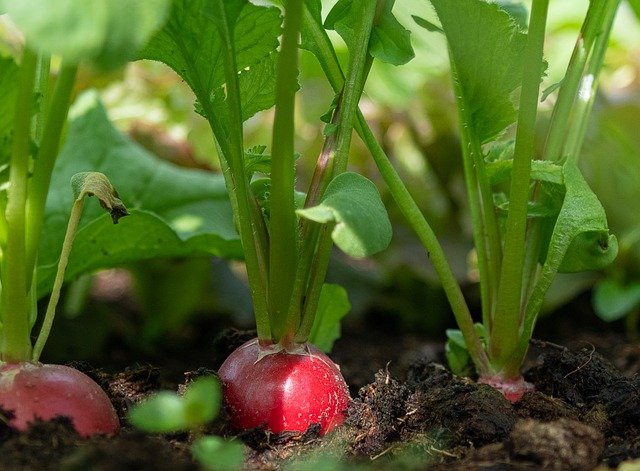
Radishes are a quick-growing root crop that can be sown in the fall for a winter harvest. They add a peppery crunch to salads and are a welcome addition to winter vegetable platters.
To start, choose winter-specific radish varieties, such as Daikon or Chinese radishes, known for their cold tolerance and ability to thrive in cooler temperatures. Begin planting radish seeds in late summer or early fall, allowing sufficient time for them to mature before the winter frost.
The cool temperatures contribute to the crisp texture and mild flavor of winter radishes. When they reach the desired size, depending on the variety, gently pull them from the ground, and they are ready to be enjoyed in salads, pickles, or as a crunchy snack.
12. Rutabaga
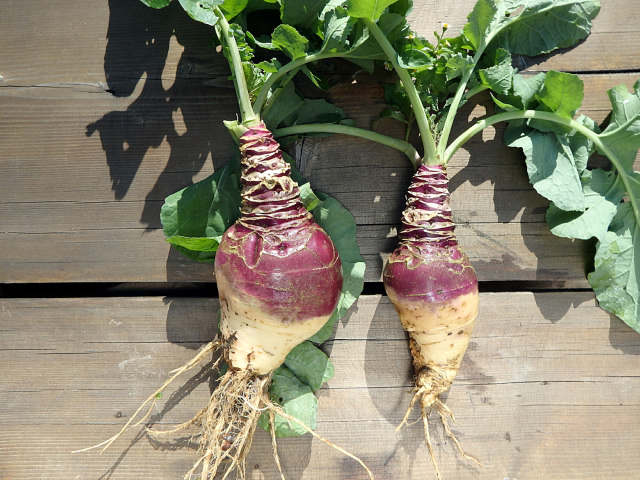
Rutabagas are a cold-hardy root vegetable that can be left in the ground and harvested throughout the winter months. They have a sweet, nutty flavor and can be used in a variety of dishes, from roasted vegetables to comforting stews.
To begin, start planting rutabaga seeds in late summer or early fall, about 10-12 weeks before the first expected frost. Rutabagas are cold-tolerant, and exposure to cooler temperatures enhances their flavor and texture.
Choose a well-drained, fertile soil for planting and sow the seeds at the recommended depth, usually around half an inch.
You can harvest rutabagas throughout the winter months, starting when the roots have reached around 3-5 inches in diameter.
13. Sweet Potatoes
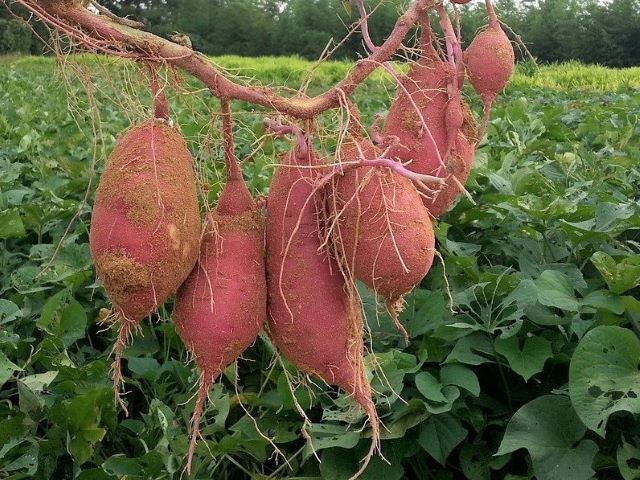
Sweet potatoes are a popular crop to grow for winter harvest. Their sweet and creamy flesh makes them a versatile ingredient in both sweet and savory dishes, and they store well in a cool, dark place, providing a reliable source of fresh produce throughout the winter.
Start by planting sweet potato slips, which are young shoots with rooted nodes, in late spring or early summer. This timing allows the sweet potatoes to mature by late fall or early winter.
Choose a well-drained, sandy soil with good fertility for optimal growth. Plant the slips in raised beds or mounds, ensuring that the soil is warm and that the plants receive plenty of sunlight.
Sweet potato vines start to yellow and die back when they are ready for harvesting, usually after the first frost.
14. Turnips
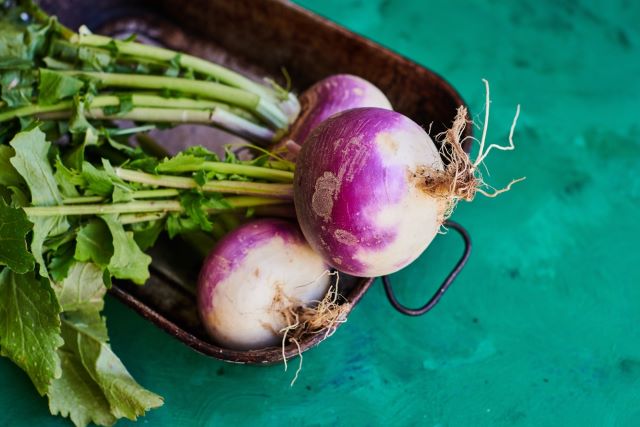
Turnips are a hardy root vegetable that can be left in the ground and harvested throughout the winter. In fact, the cool temperatures contribute to the crisp texture and mild flavor of winter turnips.
Start by sowing turnip seeds directly in the garden in late summer or early fall, about 6-8 weeks before the first expected frost. Choose a well-drained soil and plant the seeds at the recommended depth, usually around half an inch.
During the winter months, turnips require minimal care but benefit from some protection against freezing temperatures. You can do this with mulch to help insulate the soil and prevent frost damage to the roots.
Turnips are ready to harvest when they reach 2-3 inches in diameter.
Their peppery flavor and tender texture make them a valuable addition to winter soups, stews, and roast vegetable dishes.
How To Store Winter Root Crops
Once harvested, winter root vegetables can be stored in a variety of ways to ensure a steady supply of fresh produce throughout the colder months. Common methods include storing in a root cellar, using a cold frame, or simply leaving them in the ground with a layer of mulch for insulation. Proper storage techniques will preserve the flavor and quality of your winter harvest.
1. Root cellar
A root cellar is an ideal place to store winter root vegetables as it provides a cool, dark, and humid environment. Store vegetables such as carrots, beets, turnips, and parsnips in crates or bins in a root cellar. Make sure to maintain good air circulation and check regularly for any signs of spoilage.
2. Cold frame
A cold frame is a low, enclosed structure with a transparent roof that allows sunlight to enter and warm the interior. This method is best for milder climates and can be used to store root vegetables such as carrots and turnips. Place the vegetables in containers in the cold frame and monitor temperature and humidity levels to ensure they stay fresh.
3. Mulch
For a simple and cost-effective storage method, you can leave root vegetables in the ground and cover them with a thick layer of mulch. This will protect them from freezing temperatures and keep them fresh for longer. When needed, simply dig them up from the mulch and use as desired.
Regardless of the storage method you choose, it’s important to regularly check the vegetables for signs of decay and remove any spoiled ones to prevent the spread of mold or disease. With the right storage techniques, you can enjoy fresh, delicious winter root vegetables well into the season.
